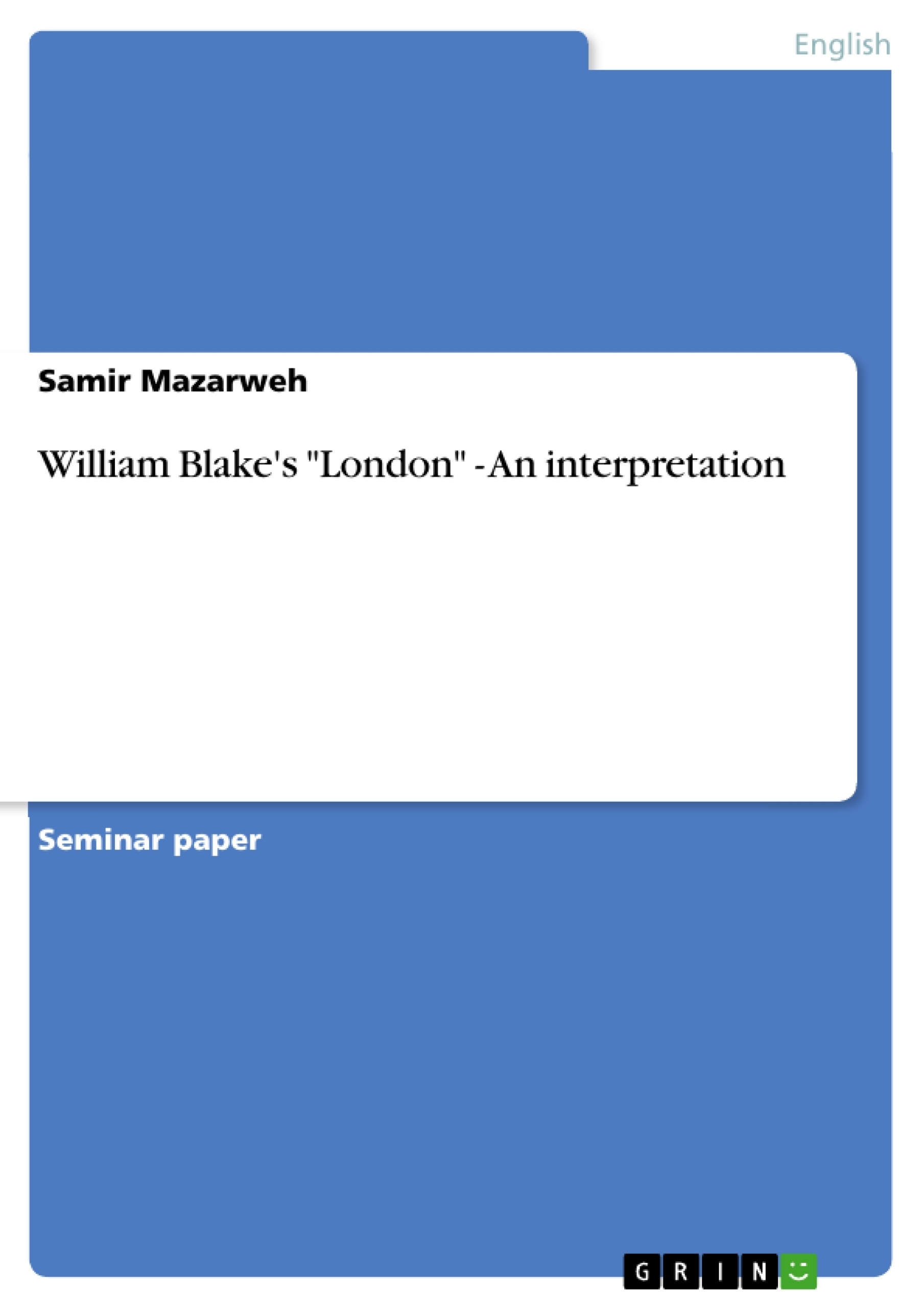This paper tries to provide an insight into the analysis of 18th century author William Blake´s poem `London´.
Comments from Blake experts like the following from Edward Thompson make this task appear easy. He said: “`London´ is among the most lucid and instantly available of the Songs of Experience.” On the one hand I agree to this statement. The poem itself is easy to understand, not much background information about the author´s life, his visions, and his complete works is required to grasp the message. However, an analysis has to provide more than just make the message of a poem understandable. It should inter alia deal with the circumstances the author lived in, the work of which the poem is part of, and last but not least, the stylistic devices and linguistic images used in this piece of art.
In the case of `London´, this has been done by professionals many times, a fact leading us to another important point that makes the task appear easier than it actually is: The mass of biographies, comments, analyses, and criticisms that have been written about Blake and his works. The advantage is obvious: Every line of `London´ has been discussed and commented on, and all that must be done is find adequate information. At the same time this amount of literature presents many different approaches to analyse the poem; too many to introduce them in a seminar paper. Hence, this assignment tries to show a few aspects only: After introducing the author and the `Songs of Innocence and of Experience´ briefly, it follows a short summary of the poem and an overview of the stylistic devices. The sixth chapter is the analysis itself, focusing on the social criticism of the poem and dealing with the “very complex relations between reading, and hearing, and seeing”.
Table of Contents
- Introduction.
- Biography.
- The Songs.
- 'London'.
- Summary
- Stylistic Devices
- Analysis.
Objectives and Key Themes
This paper aims to provide a detailed analysis of William Blake's poem "London", exploring its social commentary, stylistic devices, and overall message. It seeks to analyze the poem within the context of Blake's life and work, examining the social and political issues that are presented.
- Social Criticism: The poem highlights the harsh realities of poverty, exploitation, and social injustice in 18th-century London.
- Stylistic Devices: "London" employs a range of poetic techniques to convey its message, including symbolism, imagery, and repetition.
- Human Experience: The poem explores the themes of innocence, experience, and the loss of hope in the face of societal ills.
- The City as a Symbol: London itself becomes a symbol of oppression, corruption, and the dehumanizing effects of industrialization.
- Religious and Spiritual Dimensions: The poem engages with questions of faith, morality, and the human condition.
Chapter Summaries
- Introduction: This section provides an overview of the paper's objectives and scope, highlighting the challenges and rewards of analyzing Blake's "London."
- Biography: This chapter presents a concise overview of William Blake's life, focusing on key events and influences that shaped his artistic vision. It discusses his childhood, his career as an artist and engraver, and his unique religious beliefs.
- The Songs: This chapter introduces the two-part collection "Songs of Innocence and of Experience," explaining its structure, themes, and relationship to "London." It highlights the contrast between the two books and the poems' focus on the two sides of human nature.
- 'London': This chapter presents the full text of Blake's poem "London," allowing readers to engage with its language and imagery firsthand.
Keywords
The key terms and concepts explored in this paper include: William Blake, "London," Songs of Innocence and of Experience, social criticism, poverty, industrialization, oppression, symbolism, imagery, repetition, innocence, experience, faith, morality, human condition, religious beliefs, and the city as a symbol.
- Quote paper
- Samir Mazarweh (Author), 2010, William Blake's "London" - An interpretation, Munich, GRIN Verlag, https://www.hausarbeiten.de/document/162641



